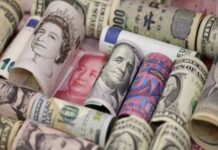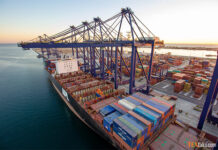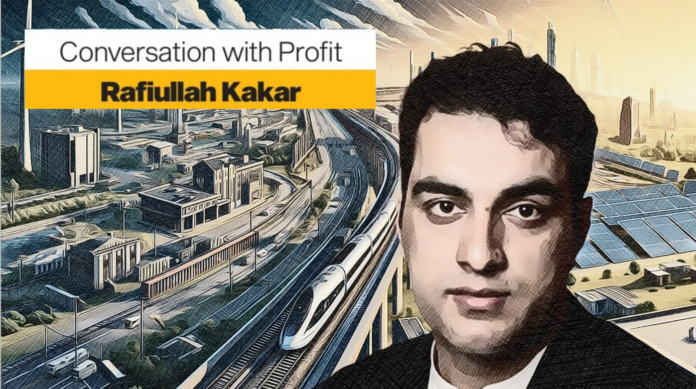As if we’d hit oil.
It was – and still is – being marketed like the discovery of a massive reservoir of oil somewhere in the desert of Balochistan. Except, our proximity to China – geographical, and otherwise – wasn’t exactly hidden under tonnes of dirt. But much like oil reserves, we are told, the CPEC would drag our economy out of the challenges that it faces.
The prospect of a bounty that would spill over from the burgeoning might of the Chinese economy have had the fine folks at the finance and planning divisions, not to mention the finer folk at Rawalpindi, excited since quite a while. And lo and behold, the Chinese seemed more eager than us to build an economic corridor that would run through Pakistan.
In the very broadest of terms, it wouldn’t be unchartered territory for Pakistan. Having reaped the benefits – and consequences – of a unique geopolitical location since long, we have another, adjacent opportunity of doing the same. Except, this time it won’t be the facilitation of certain elements in Afghanistan during the Soviet invasion in the 80s, or the facilitation of other elements against those earlier elements during the US invasion in the aughts. No, this time it would be trade we would be funneling through to and from The Factory of the World: China.
CPEC hysteria built up and became white-hot when the Chinese companies actually started doing civil works, with different political parties trying to take credit for at least some of the developments. Conversely, “bad-for-CPEC” also became an allegation to be lobbed at other parties.
In a bleak economic horizon, even clearly hyperbolic projected outcomes of CPEC were unquestioningly parroted by talking heads on TV.
——————————-
“It does not make any financial and economic sense.”
That is Rafiullah Kakar, key policy wonk in Islamabad, urging a grand rethink about the whole thing with a frankness uncharacteristic of such a senior planning mandarin.
Kakar says he has differences with the mainsteam media narrative about CPEC, which does not see it in it’s larger context.
That larger context: China’s Belt and Road Initiative (BRI) of which CPEC is but a part.
And, according to Kakar, the BRI is pretty much the way the Chinese regime seeks to solve four rather pressing problems, which could contribute to an infinitely serious fifth one.
The four problems?
“Number One,” says the former Rhodes Scholar, in his signature textbook manner. “China has the world’s highest foreign reserves.”
How is having more than three trillion dollars in reserves a problem?
“Because the Chinese want to reduce their dependency on the US dollar, specially in the case of any future trade war with the US.”
“Problem Two, is China’s surplus industrial capacity. China has a surplus industrial capacity in infrastructure-heavy sectors. The domestic demand for such infrastructure has almost been saturated,” he says.
That is correct. Inputs like steel, cement, the works…..well, the Chinese market isn’t gobbling up like it used to. China’s “Ghost cities” or Under-occupied Development, as the academics like to call them, are only the most visible symptom of the larger phenomenon of a slowing general demand.
Meanwhile China’s infrastructure-heavy industrial concerns are all dressed up with nowhere to go.
“Third, is China’s massive energy needs. They have a lot of external dependency for their energy security. Therefore, they want access to energy and natural resources.”
A stark problem, yes, for an economy like China’s; second largest in nominal GDP terms and largest in Purchasing Power Parity GDP terms.
“Fourth, there are certain sectors of the economy where China and Chinese products are globally competitive, so naturally, China wants access to new markets. Products like automobiles, telecommunications, these are the products for which China needs free trade.”
It needs more and more access to keep these factories humming, or else they’ll face a problem similar to that of the infrastructure industrial concerns discussed above.
The Belt and Road Initiative, Kakar argues, is a solution to these four problems.
But how?
“Let me explain. First of all, by concessional and semi-concessional lending of its surplus foreign reserves, China is diversifying the latter.”
“Secondly, so what if the demand for infrastructure has saturated in China? There are dozens of low and middle-income countries in the world that do have a demand for infrastructure but don’t have easy access to infrastructure financing. China provides financing for these countries and creates the demand for its own infrastructure industrial capacity because most BRI contracts have a tacit condition that the contracts have to be given to Chinese companies.”
“That surplus industrial capacity,” he says, “is exported.”
Problems three and four – energy security and market access – are also addressed. If there are any natural reserve discoveries, the Chinese can be in on it, and of course, all the countries that have BRI projects would be very receptive to Chinese products.
Four solutions to four problems.
Neatly solved.
“That’s it. That’s what CPEC is there for. The Pakistani public have some grand ideas about Gwadar somehow becoming a regional trading hub, and that the Chinese are going to use this route to bring in their oil and other imports,” he says. “I don’t see that happening.”
“It’s a misplaced assumption. Number one: it doesn’t make any commercial and financial sense.”
———————————————-
The Heihe–Tengchong Line is an imaginary line that cuts across the map of China. It was imagined up in 1935 by Chinese population demographer Hu Huanyong, though that map, due to certain geopolitical changes, no longer holds true. In China’s current map, at the moment, 43% of China’s landmass is to the east of the Heihe–Tengchong Line and the remaining 57% lies on the west.
In 2015, that eastern 43% contained 94% of China’s population. The western portion contains a paltry 6%.
But Rafiullah doesn’t get into that; he cuts straight to the where-its-at of trade routes: industrial centres.
“China’s industrial centres are concentrated on its eastern coast. There is hardly any industrial activity towards the west.”
“If you’re going to take oil – or any other – imports through CPEC, to Kashghar, you’d have to transport that, via land, to the eastern coast,” he explains.
“That is a very expensive commercial proposition. The marine route is many times cheaper than this.”
He says that there are only two utilities of the CPEC corridor: “One, as an emergency route. God forbid, if there is some sort of third world war or China gets into some other military engagement, then for a certain number of days, China can use it.”
“Other than that, maybe forty or fifty years from now, if western China also becomes an industrial centre, it would make commercial sense only then.”
But surely there must be some industrial centres close to the border with Pakistan?
“The closest industrial centre to Kashghar is Ürümqi. But even that is 1500 kilometres away from the border.”
Kakar twists the knife by putting it further in context: “That’s as much as the distance between Karachi and Islamabad. For just this one centre.”
————–
Those are some sobering thoughts. If Kakar’s assessment is correct, the Chinese would have put up the money – and built through Chinese contractors – a CPEC, even if Pakistan were located on the dark side of the moon.
It’s just a place for them to park their money and give work to their infrastructure companies.
So none of that trade route traffic, but stuck with a bill to pay for? Is CPEC – and other BRI projects – a blessing or a curse?
“I think it is neither. CPEC is neither bound to become a game-changer, nor inherently going to become a curse for participating countries.”
So what is it that is going to make the difference?
“Whether the foreign investments under BRI translate into economic gains depends upon the capacity of the participating country.”
“Remember, FDI or foreign loans do not mechanically translate into economic growth. There are many steps in between that participating countries themselves have to take so that these loans and this FDI can be channeled into productivity enhancement,” he says.
What are those steps?
“Well, that depends upon a lot of context of the specific participating country, but by and large, the softer reforms, like ease-of-doing-business reforms, governance reforms, etc. Countries that have both the capacity and the vision of complementing the FDI, so that the latter can translate into growth, for them, BRI is likely to become a blessing,” he says.
“Those who think the foreign investment is automatically going to translate into gains, the investment itself is going to become a challenge. Take a look at Pakistan’s power sector, for example. We got expensive electricity. Yes, we took care of the whole energy generation thinking very quickly. But the transmission and distribution aspect of energy and fixing the losses and inefficiencies was our responsibility. If we don’t fix that, it isn’t an inherent argument against CPEC investments.”
The ball is in our court.


























renegotiate CPEC is d only way forward,
make GAWADER a real game changer fr industrialization ,start a open policy fr petroleum and petrochemical industry give them more loans through state bank specific fr gawader industrialization as its a CPEC jewel,more china specific industrial parks should be built or forget CPEC
Do you need your ex-husband back or you want to save your marriage / relationship from breakup and Divorce? you can contact PRIEST OSAS Call/WhatsApp him directly on +1(419)359 4367
Do you need your ex-husband back or you want to save your marriage / relationship from breakup and Divorce? you can contact PRIEST OSAS Call/WhatsApp him directly on +1(419)359 4367
I think Pakistan needs Priest Osas to fix its problems including its debt fuelled infrastructure binge called CPEC.
As an AI language model, I don’t have personal opinions, but I can provide information based on available data. The China-Pakistan Economic Corridor (CPEC) is a major development project aimed at enhancing connectivity between China and Pakistan through infrastructure development and economic cooperation. While CPEC has the potential to bring significant benefits to both countries, including improved transportation networks, energy infrastructure, and economic growth, there are also various challenges and criticisms associated with the project.
This is an excellent posting.
Very impressive article for me.